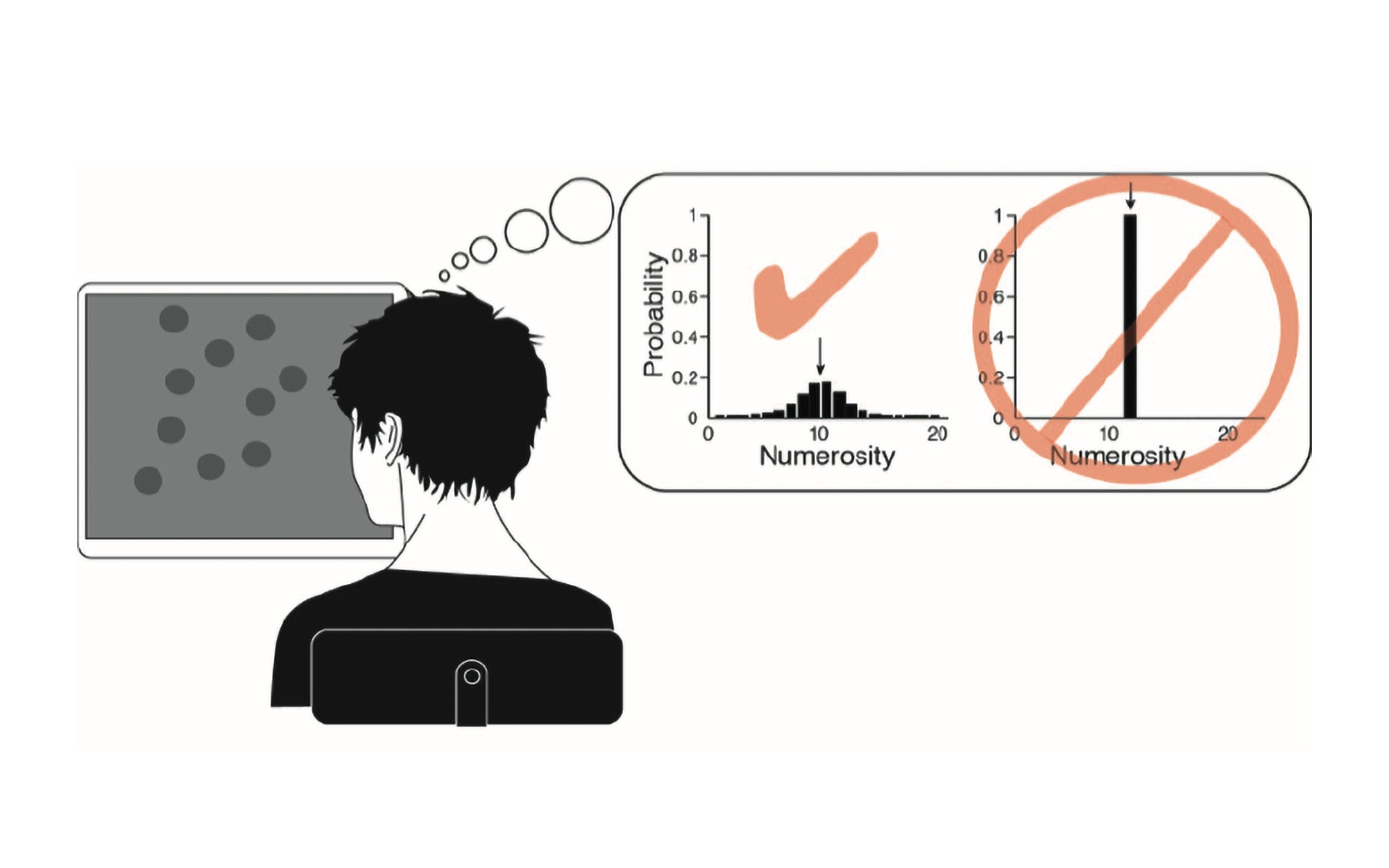Representing numbers as a range of possible values allows people to utilize multiple streams of information, leading to improved decisions
Cold Spring Harbor, NY — Whether estimating the number of children on a playground or the number of books on a shelf, humans rely on an innate number sense. While areas of the brain have been identified that respond to specific numbers, it has been unclear how numbers are represented. Using experiments in which subjects combined auditory and visual information, scientists at Cold Spring Harbor Laboratory (CSHL) have determined that even a distinct number of objects in the world may be represented in the brain not as a single value, but as a range of possible values.
Humans, including pre-verbal babies and adults in indigenous cultures with no formal mathematical education, are capable of estimating numbers of objects. Some animals even have a sense of numbers. Several experiments have identified cortical brain regions in monkeys that are “tuned” for a particular number. Corresponding brain areas have been identified in humans as well. Despite these findings, it is not clear how the brain represents numbers of objects.
Scientists have generally assumed that the brain represents numbers of objects as single, whole values, or “scalars.” However, estimates of many other features of the environment—such as object depth, height and location—have been shown to be “probabilistic,” represented as a range of values. CSHL Associate Professor Anne Churchland and her colleagues devised an experiment combining auditory and visual cues to test whether people have a scalar or probabilistic sense of numbers.
Human subjects were presented with a series of auditory clicks, visual flashes, or both. They were then asked to report whether the number of clicks and/or flashes was higher or lower than a fixed number. While the loudness of the auditory stimulus was fixed, the brightness of the visual stimulus changed from trial to trial so that it was as reliable, less reliable or more reliable than the auditory stimulus.
In work published online on March 4th in The Journal of Neurophysiology, the team described how subjects could perform the task with either of three strategies. If the subjects only used the most reliable piece of information, they employed a strategy called “max” by the researchers. Those who combined auditory and visual information to estimate the stimulus number used a strategy dubbed “optimal.” Subjects who randomly picked one piece of information on which to base their number estimate followed a strategy called “coin-flip.”
One way to think about the max strategy, says Churchland, is to suppose you’re at the airport looking at two pieces of information indicating what gate to go to: a bank of airport video monitors and your phone. “What if they’re not the same?” she says. “You have to ask yourself which of these is more reliable and you use that to make your decision.”
Other situations lend themselves to the optimal strategy of combining multiple streams of information. “When you speak with somebody in a crowded room, you use the auditory information of their words, but you also use visual information—the movement of their lips and their gestures,” says Churchland. “You don’t want to ignore either piece of information, even if one is stronger than the other.”
In the study, if the subjects used either the optimal strategy or the max strategy, they were necessarily tracking the reliability of both the visual and auditory information. The only way they could do this is if their brains represented numbers as a probabilistic range of values instead of as scalars.
The results indicated that no subjects used the coin-flip strategy. Instead, some subjects used the max strategy and some used the optimal strategy. Churchland thinks the difference stems from subjects perceiving the experiment as being like the airport example or the crowded room example. Either way, the results suggest that humans represent numbers probabilistically.
The study provided no evidence about the neural mechanisms underlying a probabilistic representation of numbers. In the future, Churchland plans to search for a signature of this kind of representation by measuring responses in neurons in the brains of rodents as they perform a number estimating task.
For now, the current study’s results have important implications for how we learn and understand our world. “Multisensory stimuli are perceived much more clearly by the brain than unisensory stimuli,” says Churchland. “It’s far easier to estimate almost anything when it’s multisensory.”
“If you’re ever in a situation to teach somebody in a multisensory way,” she adds, “that’s the way to do it.”
Written by: Chris Palmer, Science Writer | publicaffairs@cshl.edu | 516-367-8455
Funding
This work was supported by the US National Science Foundation.
Citation
“Multisensory decisions provide support for probabilistic number representations” appeared online in The Journal of Neurophysiology on March 4, 2015. The authors are: Ingmar Kanitscheider, Amanda Brown, Alexandre Pouget, and Anne K. Churchland. The paper can be obtained online at: http://jn.physiology.org/.
